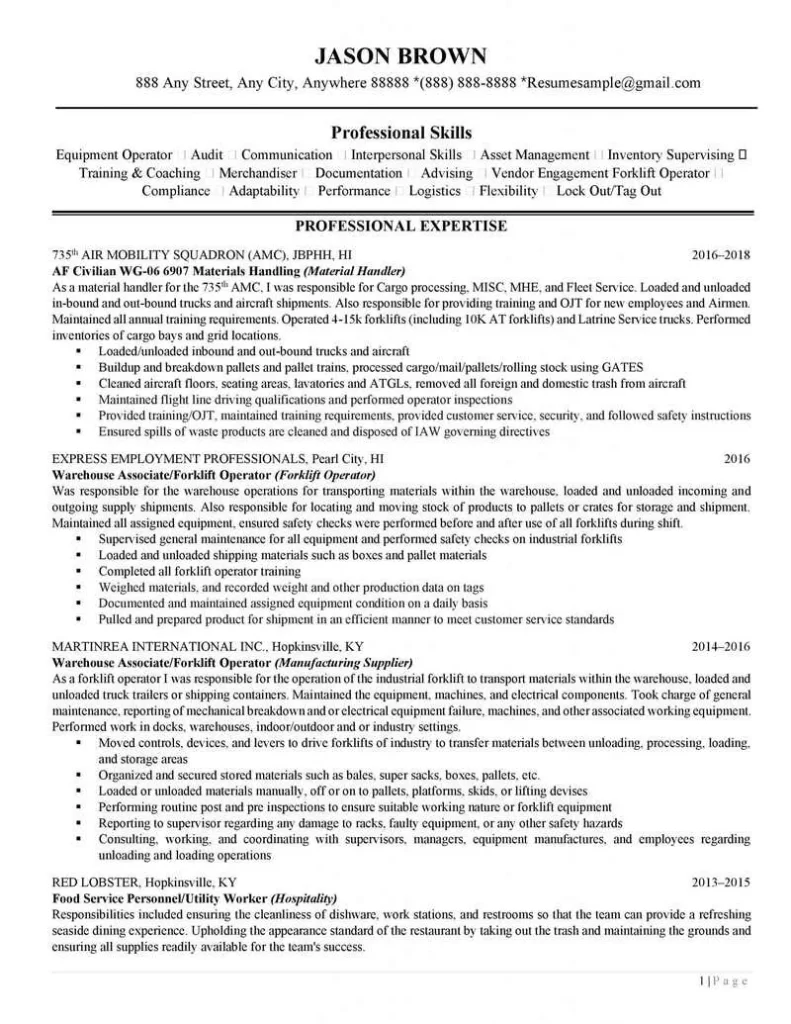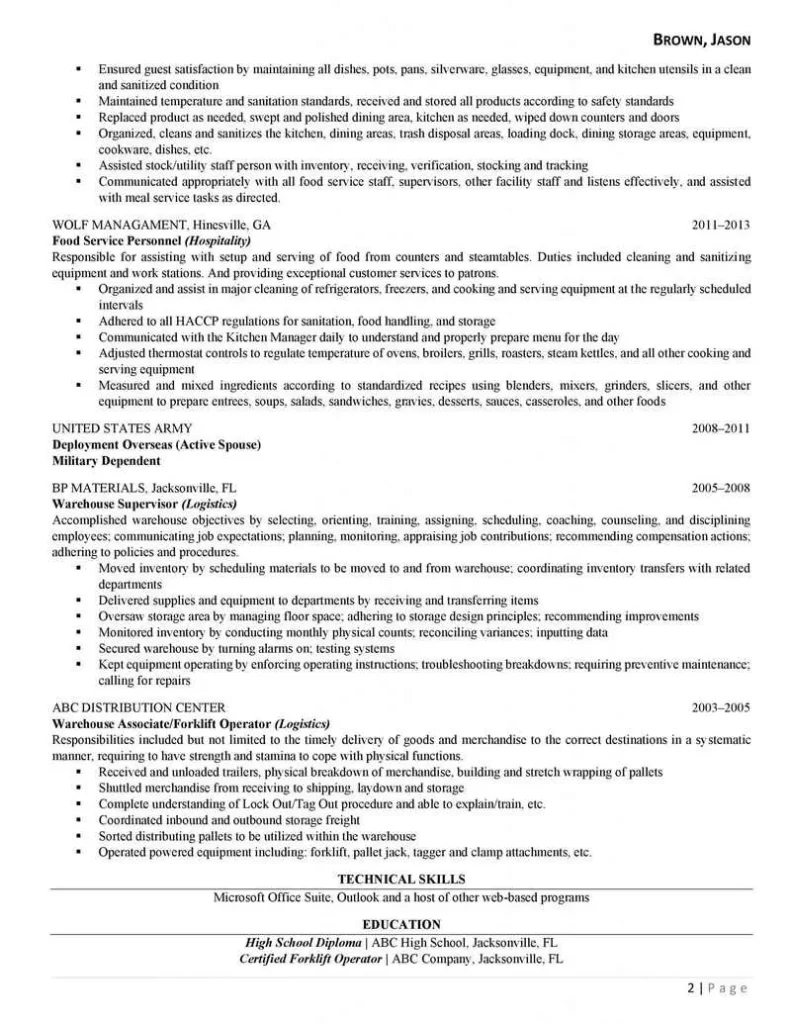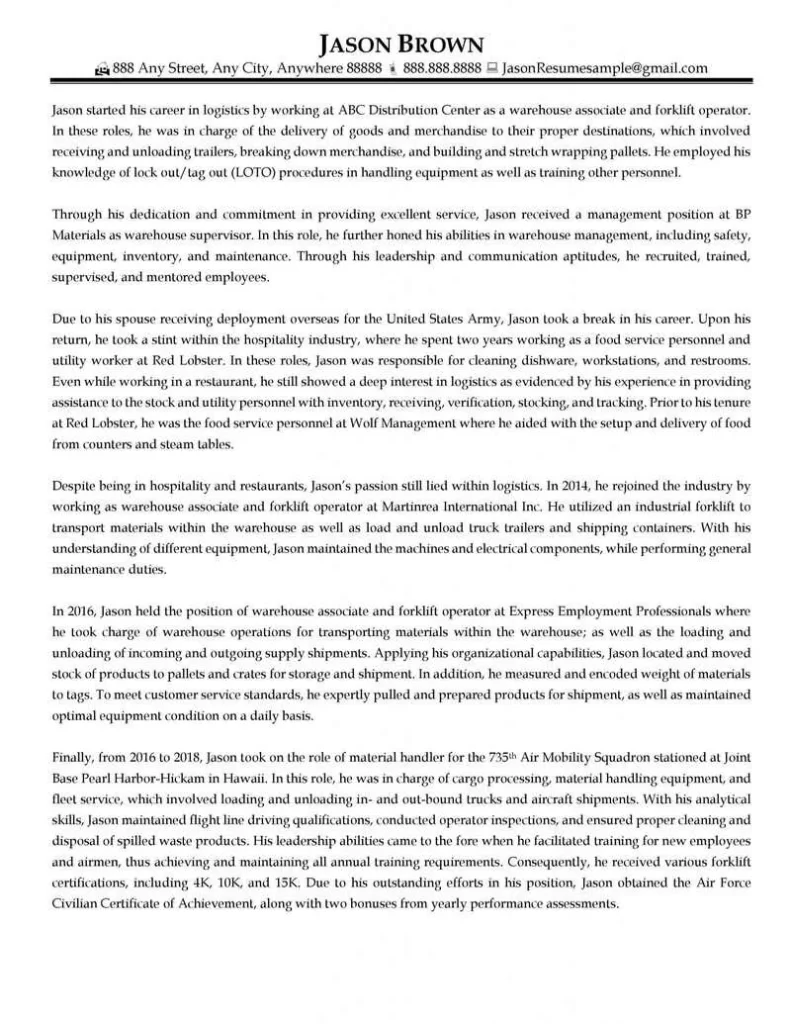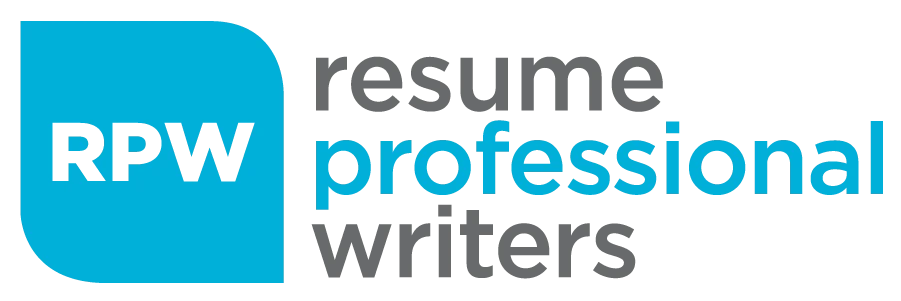While a few hiring managers would rather choose a short pitch from someone who applies for a post, you’ll find no harm in veering away from the norm. You can have a rough summary without using bullet points or tables in creating your list—and make it to your advantage. If you’re a job applicant looking for a perfect C-level post, consider preparing a career narrative, the modern approach to rewriting traditional resumes. Know the best practices on how to write a narrative resume and check examples to guide you in your job search.
What Do You Need to Know About a Narrative Resume?
As the name suggests, a narrative resume takes the form of storytelling. Likewise, it lists your qualifications line by line as if you’re telling your story. To add, this job narrative may take either the first- or third-person points of view.
A narrative resume may be your best way to impress recruiters. Like traditional copies, this gives employers a better grasp of your skills and experiences as a job seeker—only this time written in a different, unorthodox approach. Plus, this type of resume offers other benefits to job applicants. Here are a few upsides:
- It’s a complete detailed view of your work experience.
- Your value comes to life on paper.
- It brands your story to help you connect with your reader.
- Your job application is presented in an intriguing yet memorable way.
- It piques your reader’s interest, leading them to want to meet with and learn more about you.
Remember: A well-written narrative resume helps hiring managers to imagine you holding the target post.

How Do You Write a Narrative Resume?
A narrative resume is another way to write your job search tool. This has a different style and method of writing. Yes, turning away from the usual way of writing resumes might sound tricky; but it’s more effective than you expect.
As it ties your experiences and abilities together, recruiters will have a fuller grasp of your skills. It will also be easier for them to assess if you’re the right person for the job or not. So, if you want to know how to write a narrative resume, check out these four important things to remember in writing your profile.
1. Think of it as a “one-page novel” of your career life.
Put your qualifications and experiences into words the best way you could.
2. Keep your paragraphs short.
Keep in mind to write your career journey in a manner that wouldn’t bore your readers.
3. Improve your format.
Make use of this format to put your best foot forward by including resume keywords relevant to the job post to make your document ATS-friendly.
4. Write a striking headline.
Highlight related skills as you craft an exceptional headline that will serve as your brand.
Tips in Writing an Effective Narrative Resume
To write a resume takes effort and time. However, it’s all worth it once you land your target job. Thus, you have to make sure that your tool is good enough to win the interest of your potential employer. You could look for narrative resume samples online to guide you. But, to make things easy for you, click on the video and heed these top tips.
Things to Include in a Narrative Resume
As with regular resumes, career narratives sum up your qualifications and offer a glimpse of your value proposition and personal branding. Moreover, it should follow the correct narrative summary format. Here are some factors that form a well-written narrative resume.
1. State all important details.
Emphasize what’s important. Take note: An effective narrative resume boasts of powerful word use and includes only the details that recruiters need to read.
2. Your narrative should feature five elements.
As with stories, this includes plot, setting, characters, conflict, and resolution. Also, don’t forget to share pertinent stories about your past jobs and employers to highlight your work ethics and quantify what you can do.
3. It should neatly sum up your career and target trajectory.
You can share your plans on where you want to steer your career and the means you’ll use to get there.
Narrative Resume Sample
Your resume is your tool to market yourself to recruiters. Thus, having an effective resume is important to be noticed by hiring managers. It’s a great advantage if you know how to write a well-written resume. Plus, you can also benefit from using the less-travelled kind of resume—career narrative resume. To give you an idea on how it differs from a traditional one, check out two resume samples below.
Traditional Resume


Narrative Resume

A career narrative lets you tell a firmer story better than a bullet-point list. Even if you have a long job history, you can still focus on pieces of info relevant to your target job. Just heed the best practices on how to write a narrative resume as your guide in writing your piece.
Lastly, understand that this format isn’t for every job seeker and industry. It serves well those who have an extensive work history and a long story to share. So, if you’re a job seeker with a seasoned career, make sure that when writing your job tool, your piece should speak of what you can bring to the table.

Let Our Writers Craft Your Narrative Resume
It takes great writing skills to come up with an excellent narrative. If you’re not confident writing your job search tool, you can seek help from expert resume writers. Don’t look any further—here at RPW we offer professional resume writing services, which include specialized documents such as narrative resume, opening statement, and biography. Take the easier route and contact us now for more career help.








